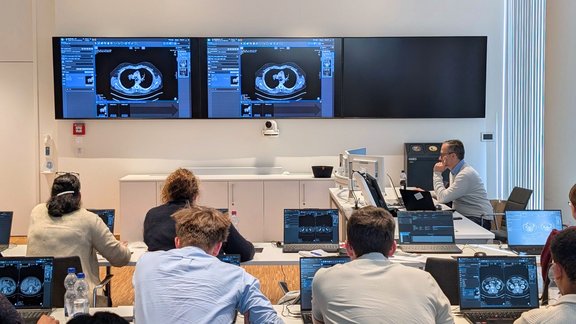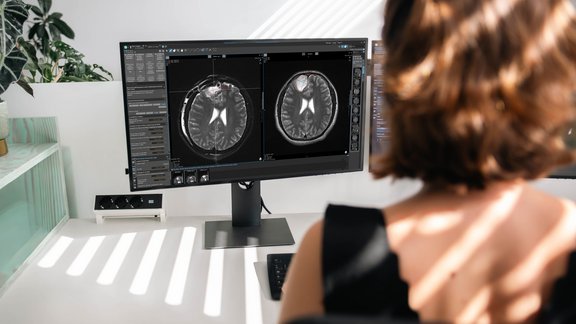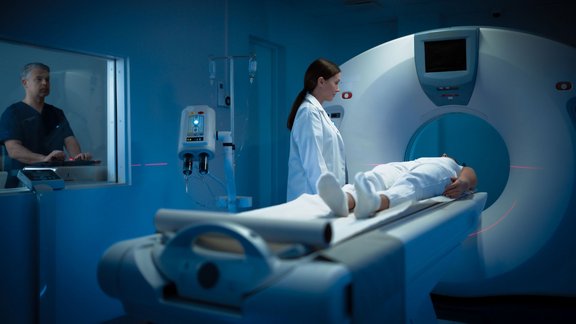Interoperability plays a crucial role in healthcare: it enables seamless communication of patient information across different systems, leads to significant benefits throughout the healthcare system and improves patient care.
The introduction of electronic prescriptions (e-prescriptions) has further highlighted the importance of efficient data exchange in everyday healthcare operations. To ensure smooth and secure exchange of complex health data, high interoperability between systems in medical practices, pharmacies, and hospitals is essential. However, Germany still faces several challenges in this regard compared to other countries. [1]
Interoperability as a Key to Improved Patient Care
Interoperability refers to the ability of different systems to connect and communicate in a coordinated manner. [2] The key to effective interoperability is ensuring that the exchanged information is usable, which is best achieved through structural and semantic standardization of data transmission. [3] Ideally, this allows real-time access to all relevant data of an individual or a group of individuals from a centralized location. [4]
FHIR (Fast Healthcare Interoperability Resources), a healthcare data standard, supports and facilitates more efficient and consistent data processing. FHIR is an open-source framework that organizes health information into different classes, known as resources. [5] It provides a standardized structure that enables these data to be organized and interpreted by various computer systems or applications [2], from mobile apps to server communications within large institutional healthcare providers [5]. This improved data exchange offers advantages to various stakeholders, including doctors and pharmacists, while also fostering innovation in the healthcare sector. [6] Additionally, patients gain greater control over their data through improved access to their health records. [7]
Challenges of Healthcare Digitalization
Despite the benefits, the path to seamless interoperability is fraught with challenges. In Germany, the average state of digitalization in the healthcare system complicates the journey toward seamless interoperability. [8] There are too many old systems that have merged over the years but that are not interoperable: "On a technical level, the IT systems of the various stakeholders are unable to exchange data in a way that the receiving system can correctly interpret and automatically process it." [9] The current process often resembles manual documentation, where information is taken from one device and manually transferred to another. This administrative burden is labor-intensive, inefficient, and needs to be reduced.
Moreover, today’s healthcare system is heavily document-centric. The goal for the future, however, is to create and continually enrich a comprehensive, holistic view of the patient. To maximize their utility, electronic health records must be interoperable and semantically coded, meaning that systems need a mutual understanding of the information to respond appropriately in context.
A concrete example illustrates this: a radiologist needs to know whether a patient has any allergies to contrast agents before admission. Without an interoperable system, this information must be laboriously searched for in the hospital information system (HIS). In contrast, in an interoperable system with semantic understanding, all known patient allergies are immediately listed in the appropriate place.
The Importance of a Unified Standard
A unified standard like FHIR has enormous potential and enables the effective use of health data, also beyond immediate application. For instance, when interoperable data are collected for a tumor board, they can also be used to automatically populate cancer registries.
A crucial requirement for this is the availability of structured data that is both interoperable and semantically coded. In other words, each data point must have a clear meaning. One of the central challenges for interoperability is that different institutions often use varying definitions and standards for data points, leading to inconsistencies. A well-known example is the debate over whether a zebra is a white horse with black stripes or a black horse with white stripes.
The solution to this problem lies in collaboration among all parties to establish a common standard. Mint Medical collaborates with research institutions and the Medical Informatics Initiative under the Vision Zero program to standardize radiological diagnostic reports. These reports are among the most important resources in FHIR for efficiently capturing and utilizing radiological information.
Mint Medical has always captured structured data and can now even export data in an interoperable format that was entered into the system ten years ago. The data can be immediately used, for example, for scientific publications. This represents a valuable treasure trove of data, especially for secondary use. Mint users benefit from these exports because their data have already been semantically coded and structured.
The Future of Healthcare Documentation
Mint Medical is working on capturing and utilizing structured data throughout the entire patient workflow, from admission to discharge. The goal is to create a holistic view along the entire patient journey. This information is then leveraged to continuously optimize workflow and data aggregation. The system efficiently utilizes the relevant context, understanding exactly where the patient is in their patient journey.
Ultimately, the goal is to reduce the amount of manual interaction (i.e., clicking and manual data entry) and improve data flow to support clinical systems, allowing more time for patient care. Interoperability in healthcare is a critical factor in improving patient care and the efficiency of clinical processes.
By implementing standards like FHIR and collaborating with all stakeholders, we can create a seamless, efficient, and patient-centered healthcare system. Companies like Mint Medical play a significant role in realizing the vision of fully interoperable and data-driven healthcare. Let's work together to make the most of what medicine has to offer and use the available data efficiently and effectively.
Sources:
[1] Kostera, Thomas. 2020. “Elektronische Rezepte: Schlüsselfaktor Anschlussfähigkeit.” Programm Gesundheit. https://www.programm-gesundheit.blog/e-rezept/.
[2] “Interoperabilität mit FHIR: Struktur in medizinische Daten bringen.” Medical Values. https://medicalvalues.de/de/interoperabilitaet-mit-fhir-struktur-in-medizinische-daten-bringen/.
[3] Weber Stefanie & Kai U. Heitmann. 2021. "Interoperabilität im Gesundheitswesen: auch für digitale Gesundheitsanwendungen (DiGA) verordnet.” Bundesgesundheitsblatt Gesundheitsforschung Gesundheitsschutz 64.10: 1262-1268.
[4] Dr. Russel Leftwich. 2023. “The Concept of FHIR: A Healthcare Data Standard Designed for the Future.” Inter Systems Learning Services. https://www.youtube.com/watch?v=fv2xTR_0QnA.
[5] HL7 FHIR. 2022. “Introducing HL7 FHIR.” HL7, https://hl7.org/fhir/R4B/summary.html
[6] Lamprinakos, Georgios C. et al. 2014. “Using FHIR to develop a healthcare mobile application.” 2014 4th International Conference on Wireless Mobile Communication and Healthcare - Transforming Healthcare Through Innovations in Mobile and Wireless Technologies (MOBIHEALTH), Athens, Greece, 2014, 132-135.
[7] Saripalle, Rishi, Christoper Runyan & Mitchell Russell. 2019. “Using HL7 FHIR to achieve interoperability in patient health record.” Journal of Biomedical Informatics 94.
[8] Kassel, Kristin. 2020. “Digitale Innovation – Trendwende im deutschen Gesundheitssystem: Wie Unternehmen Digitalisierung zur strategischen Marktpositionierung nutzen.” Eds. M. Pfannstiel, K. Kassel, C. Rasche. Innovationen und Innovationsmanagement im Gesundheitswesen. Wiesbaden: Springer Gabler.
[9] Caumanns, Jörg. 2019. “Zur Diskussion: Stand der Digitalisierung im deutschen Gesundheitswesen.” Zeitschrift für Evidenz, Fortbildung und Qualität im Gesundheitswesen 145: 22-29.



